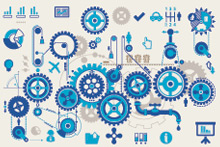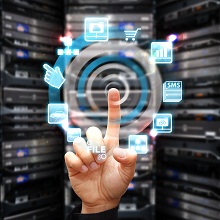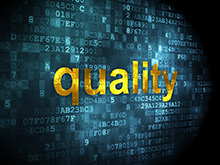Energy efficiency is the most touted and important issue in the consumer, power and global ecosystem. Worldwide energy demand is rising exponentially. While some of the sectors like Transportation, Industrial production have been partially efficient in satiating the needs, sustainability at residential levels should still be considered to be in nascent stages, rising from a lack of technological infrastructure support for users. Taking in context the rapidly increasing energy cost, paired up with the scarcity of energy resources, its economic benefits are multi fold at macroscopic level where national and international goals and laws have to be fulfilled and abided by.
“There is too much Energy Conversation than Energy Conservation. Let’s Walk the Talk“
We at Happiest Minds firmly believe that, as we go forward we should leverage technology to envisage a big change and make a difference in how people live, work and innovate. In India, there is a lot of room for this transformation to happen. Let’s go invent tomorrow, instead of worrying about tomorrow.
Use Case 1: Display the global energy consumption and costs using data from Smart Meter and Metering Operator
Brief Description
The customer is presented with information about the global energy consumption of his/her house. The Smart Meter provides a sub-set of its data, including instant power. This data is dispatched either periodically or upon request. The Smart Meter provides its data to the Home Area Network (HAN) either directly, using its own interface, or through a meter service module where the meter records its measurements in the form of index (one per tariff period type) or load curves. Some Smart Meters also have a switching device to limit the power output in conformance with the contracted subscribed power. It is also equipped with a HAN interface for delivering information (index, tariff period, etc.) to devices in the HAN.
This information may be directly received, treated, stored and displayed on a dedicated display, either in kWh or in €. It may also be collected by a Home Gateway that hosts a Web application collecting data from HAN devices and organizes them for a user-friendly presentation.
Actors Involved
Actor 1 is Consumer/Customer occupying the house where electricity is consumed
Actor 2 is Metering Operator, responsible for metering and collecting the electrical consumption data
Actor 3 is Energy Provider, responsible for supplying and marketing of electricity to the consumer
Actor 4 is Energy Service Provider, responsible for supplying and marketing energy services to customers
Call Flow Analysis
- Global Energy consumption pattern information of his/her house is presented to the customer.
- This data is provided either through the Meter or through the meter service module.
- No cost information would be incorporated in the data in compliance to regulation, metering operator is not allowed to provide such information and the energy rates for the customers is defined by Energy Retailer. Hence :
– either no energy cost is displayed,
– or the customer has to manually enter the energy prices for the different tariff periods on its displaying device, and the cost is calculated in the display device itself,
– or the home gateway is able to retrieve energy rates from a web service on the Internet. - This data can be displayed in various formats (numbers, graphs etc.) in a Smart or Customer Appliance
Use Case 2: Display global and per appliance energy consumption and costs, either realized and/or forecasted
As an extension of Use Case 1, customer is also informed on the energy consumptions of the single appliances along with forecasting of global energy consumption based on statistical analysis of past consumptions and taking into account the main characteristics of household appliances, based on indications given by the user, as well as the season, weather conditions and external temperature.
Actors Involved
Call Flow Analysis
- The quality, frequency and detailing level of data from various appliances and equipment may vary but all these data can be collated to display total house energy consumption pattern
- Smart Appliances estimate the energy that will be consumed during their next operation/cycle and could pair it up with information regarding energy cost and the next operation cost by requiring Home Gateway or a Service Web Server to perform energy cost evaluation.
Requirements
- Communication – Medium Bandwidth requirement for collecting, forecasting and planning of data, in non-real-time
- Data and Context Management – High demand for context based and filtered data
- Processing – High demand for computing resources
- Service Integration – Seamless integration of 3rd party services like weather forecasting
Use Case 3: Warn the consumer if available total power (at home) is not sufficient to run a Smart Appliance
If the Smart Appliance can estimate the maximum power that would be consumed during its next cycle and there exists a risk or threat to exceed the threshold of the contracted subscribed power, a warning is emitted and displayed on the appliance or other customer interface(s).
Actors Involved
Call Flow Analysis
- The smart meter and meter service module functionality remains the same
- Each appliance:- Estimates maximum power to be consumed under the next operation
– Receives information of subscribed power and of instant global power consumed at that moment, either from the Smart Meter or the meter service module or HAN
– Deduces available power at that moment, displays a warning to the user if it is not possible to run
– And eventually sends information that it is not possible to run through HAN in order to display it on Customer Interface(s)
– Smart Building scenario document

Aditya is a former Happiest Mind and this content was created and published during his tenure.





